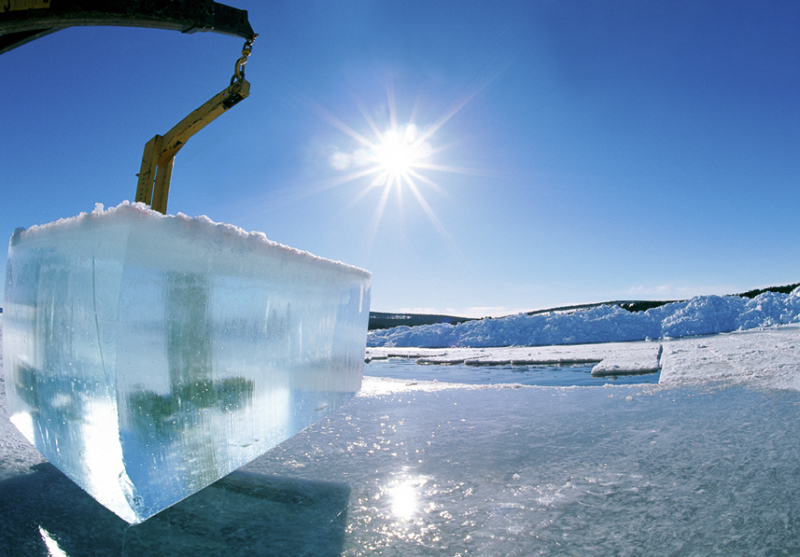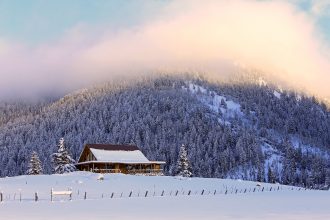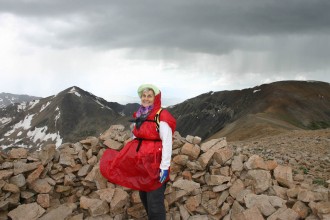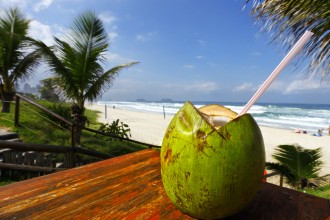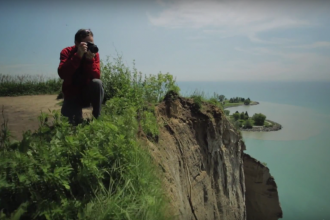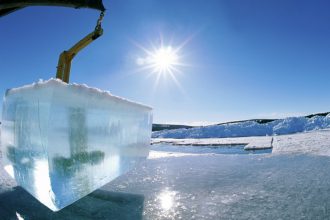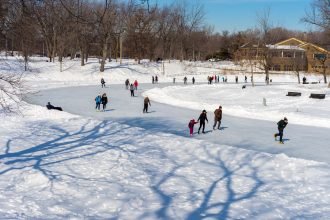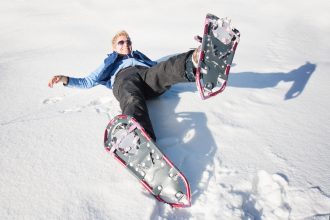The movie Frozen introduced a modern audience to the long-forgotten trade of ice cutting. Think men working with pick-axes and saws to extract massive blocks of ice from a frozen lake to sell to customers far and wide. In the late 1800s, the ice harvest played an important role in the Canadian economy. This winter, YDH sat down with Georgina Pioneer Village curator Melissa Matt to learn about Lake Simcoe’s ice cutting trade – and talk about its popular ice fishing scene.

Take us back to Lake Simcoe circa 1870. How did the ice-cutting boom get started?
In the beginning, many ice businesses were run by local families, and butchers and dairies would harvest their own ice right out of lakes and ponds. As farms grew bigger and more hotels opened, there was greater demand for fresh, clean ice.
Exactly how big a business was ice?
In 1876, James Fairhead started the Springwater Ice Company, which later became Lake Simcoe Ice Company after it acquired the Knickerbocker Ice Company. At Jackson’s Point, the ice trade employed 50 men and 12 horses!
How did workers harvest ice from the lake?
It was quite a process! First, they had to clear the ice surface of snow using scrapers and a team of horses. Then, they used hand saws with sharp teeth – picture the two-handed saws used to cut down trees, but with just one handle – to cut massive ice blocks.

When you say “massive”, how big are we talking?
They were seriously big! Workers needed the ice to be between 14 to 20 inches thick before they would consider cutting, and the ice blocks harvested by the Lake Simcoe Ice Company weighed up to 300 pounds.
Wow, that is so big! So, how did they move these giant blocks of ice?
Here’s a little backstory – the men who worked at the Jackson’s Point lumber mill in the summer worked in the ice trade in the winter. It was the perfect fit because they were used to loading and unloading rail cars.
The lumber mill had a derrick, which is like a crane arm, which they used for lifting heavy objects. In the winter, they rigged the derrick to lift the ice blocks.
At the time, the Lake Simcoe Junction Railway went right to the ice, so workers could load the blocks directly onto the train. This allowed the Lake Simcoe Ice Company to ship ice to customers as far away as Toronto and the United States.
It sounds like the ice trade made an enormous contribution to the region.
It really did. It provided jobs for local men, as well as men who came to Lake Simcoe specifically for work. They rented rooms in boarding houses run by women.
We understand the ice fishing industry is also a time-honoured trade in Lake Simcoe.
That’s right. We have records going back as far as the early 1800s that show settlers bought fish from First Nations spearfishers during the months of January and February. At the time, settlers ate lots of preserved meats during the winter months and fresh caught fish was a welcome change of pace.
What did ice fishing look like in those days?
A spearfisher would make a hole in the ice, which they would cover with a small evergreen tent. They’d lie on the ice with the tent covering their upper body and keeping them warm. When they spotted a fish, they would strike it with a spear that had a barbed tip.
What kinds of tools did spearfishers use?
Blacksmiths created spearheads with 13 tines that were attached to poles measuring 10 to 15 feet long. Another cool innovation is the wooden herring decoys spearfishers used. The decoys were weighted with lead and had tin fins that determined how they moved underwater. Georgina Pioneer Village has some spears and decoys for viewing in our collection – just be sure to call ahead and make an appointment!
And now Lake Simcoe is known as the ice fishing capital of North America!
That’s right! In 1991, we hosted the World Ice Fishing Championship, and the Canadian Ice Fishing Championship came along in 1994. This year, we’re looking forward to welcoming participants and spectators to our annual ice fishing derby on February 17, 2019. It’s always so magical to see the community of hundreds and hundreds of ice huts rise up on the frozen lake in the winter.
Now that you know the history of ice fishing, start experiencing the fun at one of the ice fishing operators in YDH!

